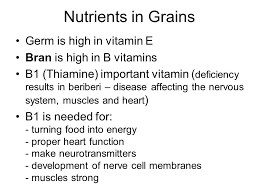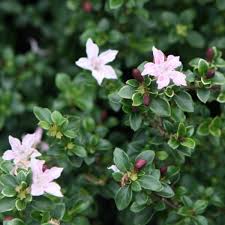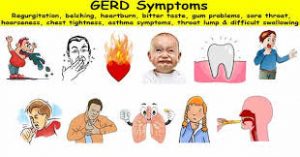RHUS TOXICODENDRON.

This remedy is derived from the Poison Oak shrub.
This remedy suits subjects, who are listless, have sad thoughts and contemplate on suicide.
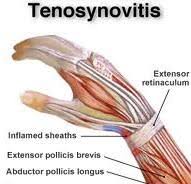
This remedy has a profound effect on the skin, joints and mucous membranes. Rhus tox affects fibrous tissues, joints, tendon sheaths and aponeurosis etc.
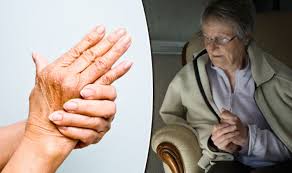
This remedy suits subjects, who have ailments coming on after strains, over-lifting, getting wet and while perspiring. This remedy suits subjects who get rheumatism in the cold season.
This remedy also suits subjects, who are extremely restless with continued change of position. It suits subjects, whose sensorium is cloudy with a great sense of apprehension in the night, which forces the subject out of bed in the night.
This remedy suits subjects who have a headache in the back of the head and have humid eruptions in the scalp with great itching.

This remedy suits subjects, whose eyes are swollen edematous and who have orbital cellulitis (inflammation around the eye-lids). This remedy is also useful in pus forming infections where there is a profuse flow of yellow pus of the eyelids with a suppuration of the iris. This remedy is also useful in Rheumatic iritis.
This remedy is useful when there is pain in the ears with discharge of bloody pus.
This remedy suits subjects, who have coryza with sneezing while getting wet.
This remedy is useful in facial neuralgia with comes on while getting cold.
This remedy suits subjects who have a sore throat with swollen glands. It suits subjects, who have hoarseness on first beginning to sing and disappears after singing for a while.
This remedy suits subjects, who lack an appetite with an unquenchable thirst associated with a bitter taste in the mouth. This remedy suits subjects who have nausea with vertigo and a bloated abdomen after eating. This remedy also suits subjects who have a desire for milk and who are drowsy after eating. This remedy suits subjects, who have rumbling flatus after eating, which disappears after continued motion.
It is a useful remedy in male subjects who have a swelling in the prepuce, which is dark red and erysipelatous, edematous with an intense itching.
It suits female subjects, who have intense itching and swelling in the vulva.
It suits subjects who have a hypertrophy of the heart and who have trembling and palpitation, while sitting still.
It suits subjects, who have pain and stiffness in the small of the back, who are better with motion or while lying down on something hard and who are worse while sitting up.
This remedy suits subjects who have tearing pains in the ligaments, tendons, fascia and rheumatic pains in the nape of the neck, loins and extremities, which is better with motion. This remedy also suits subjects who have stiff limbs, which may be paralyzed. This remedy also suits subjects who have Sciatica, which is worse in cold damp weather and at night.
This remedy suits subjects, who have fever and who are restless, and whose bowels may be loose, and those who feel cold as if cold water were poured over the subject.
This remedy suits subjects, who have a skin that is red, swollen, intensely itching, vesicular eruption. This remedy is also useful in urticaria, pemphigus, erysipelas and cellulitis.
This remedy is considered to be specific for Typhoid, Dengue fever, Erysipelas, Influenza, Measles, Septicemia and Rheumatic fever.
This remedy suits subjects, who sleep with dreams of great exertion, and get up groggy, as if in a stupor, and, are sleepless before midnight.
This remedy suits subjects who are worse from sleep, cold wet rainy weather and after rain in the night, after drenching, while lying on the back or on the right side.
This remedy suits subjects who are better in warm dry weather, motion, walking, change of position, rubbing, warm applications, and from stretching the limbs.
TIPS FROM THE MASTERS…
After a Cataract surgery, RHUS TOX is beneficial to control the threatened Iritis and the formation of pus.
Dr. Dewey, M.D.
RHUS TOX is the Homeopathic knife in Appendicitis.
Dr. Biegler.
RHUS TOX has been a remarkably efficient in relieving the soreness, restlessness and other distress after operation involving the right lower quadrant.
Dr. Stearns, M.D.
RHUS TOX is the best prophylactic for cases of surgery. It should be given for 48 hours in the 30th dilution every 3 hours. It will prevent sepsis.
Dr. R. B. Das.
In any inflammation of the eye following cataract extraction, RHUS TOX is a most valuable remedy and is given as soon as the patient begins to complain of pain, accompanied by lachrymation and puffiness of the lids.
Dr. Norton, M.D.
RHUS TOX is valuable in volvulus of the intestine.
Dr. Grimmer, M.D.
I have had to treat very young babies with cyanotic faces and have here used RHUS 3 with striking benefit. In several cases, in little infants, in whom I had noticed a bluishness of the face or just of the lower lips only. I have used RHUS with undoubtful benefit, the bluishness disappeared.
Dr. Burnett, M.D.
RHUS TOX is the remedy for musicians who suffer from Pulmonary hemorrhages due to prolonged performance.
Dr. Burt.
RHUS TOX rarely fails in chronic cases of SCIATICA.
Dr. Ruddock, M.D.
Para-paresis occurring in young children, caused by exposure of the back or seat to damp cold, readily yields to RHUS TOX and an occasional dose of SULPHUR.
Dr. Durham, M.D.
I have myself found COLOCYNTHIS curative only in recent cases of SCIATICA, greatly preferring ARSENIC & RHUS TOX in those of longer standing.
Dr. Hughes, L.R.C.P.
RHUS TOX will enable persons to withstand muscular fatigue.
Dr. E. A. Farrington, M.D.
As soon as Enteric fever is suspected BAPTISIA should be administered, 1 or 2 drops of 1x dilution of the strong tincture, every 2 or 3 hours. This remedy is of great value, modifying and even cutting short the attack by destroying the poison in the blood. Should, however, the administration of BAPTISIA have been much delayed and the specific poisonous effects produced, other remedies must be resorted to, especially ARSENICUM & RHUS TOX.
Dr. Ruddock, M.D.
RHUS TOX is invaluable, often modifies in considerable degree the cutaneous inflammation of chicken pox and thus favorably influencing the future of the case.
Dr. Goodnough.
Probably the very best remedy in the Materia Medica for Parotitis accompanying Scarlatina is RHUS TOX.
Dr. Farrington, M.D.
RHUS TOX is an excellent remedy for barber’s itch. It should be tried first before resorting to any other remedy.
Dr. R. B. Das.
Skin diseases alternating with Dysentery or Asthma: RHUS TOX.
Dr. Tyler, M.D.
RHUS TOX for toxic dermatitis occurring in professions handling Mercury, Carbolic Acid, washer men, dyers or miners suffers from similar affections.
Dr. R. B. Das.
Immediately bathing with water as hot as can be borne for a length of time followed a compress of ARNICA, ACONITE, RHUS TOX or RUTA. This treatment employed promptly generally cures at once.
Dr. Ruddock, M.D.
The specific remedy for lumbago is not PULSATILLA, as was formerly supposed, but RHUS TOX; so far I have cured about every case that I have had to treat with RHUS TOX in 3 or 4 days, except perhaps 2 or 3 cases where I had to complete the cure with PULSATILLA.
Dr. Jahr.
Bad effects of oil bath: RHUS TOX.
Dr. C. Boericke, M.D.









